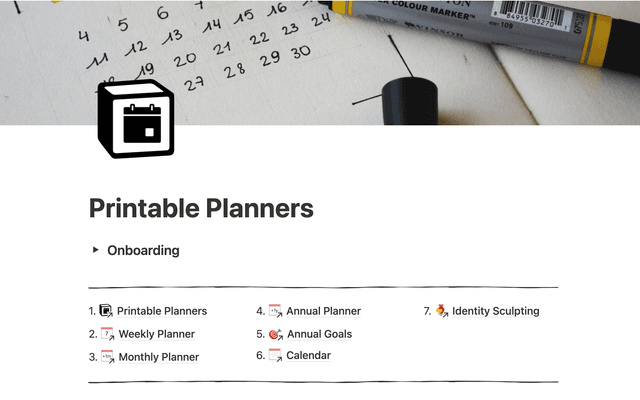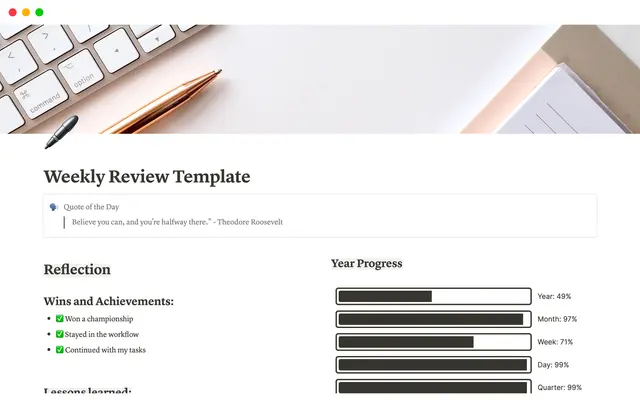How tech startups build their company operating systems in Notion
Learn how to build a truly scalable workspace in Notion. We'll show you how to create a company hub that helps your startup work smarter — from knowledge sharing to team collaboration to project planning.

- Building your Company OS in Notion
- Document key company information
- Navigate through the sidebar
- Surface dynamic information with databases
- Add metadata to each page in the wiki
- Collaborate and share access instantly
- Extract insights from your knowledge with Notion AI
- Connect other tools
In a fast growing startup, your knowledge lives and breathes, changing daily. But, with work scattered in folders, docs, and spreadsheets, information is easily lost, and teams waste time searching for answers.
Your tech team needs a trusty workspace with everything organized and easy to find, that makes collaboration easier than ever.
Notion gives you a clean, versatile operating system that scales with your team. Start with a wiki, and incorporate project management, meeting notes, and much more into a connected, intelligent operating system, where all your work happens.
In this guide, you’ll learn how to build your company OS using customizable templates to create a scalable system that’s a joy to use.
The core of your Company OS is the wiki, which brings together crucial information your team members need every day.
You can build a wiki from scratch by creating a blank page in your company teamspace, adding new pages for different topics, and organizing them with headers and columns.
But, for busy founders, it’s more efficient to start with a template.
Find the Company Home template in the Notion templates library and duplicate it into your workspace.
Document key company information
The Company Home template has several pages under each heading.
Use these pages to record important information for the whole team, like a guide to getting started, your company’s mission, vision, and values, plus company policies on benefits, expenses, and more.
Replace sample content with your own information, and delete any pages you don’t need.
To reorder the pages, drag and drop them and add new headers and columns.
Every page can be customized with icons, emojis, and page covers to make your content more accessible and easy to navigate.
What’s more, Notion’s clear fonts, variety of embeds, and drag-and-drop editing make your pages aesthetically pleasing and ready to share by default.
Click Add icon or Add cover at the top of any page to customize it.
Navigate through the sidebar
The wiki brings crucial information together on one page, and you can nest pages inside pages infinitely.
Team members can find their way around pages and dive into any topic instantly, and click the breadcrumb at the top left of any sub-page to instantly get back to the Wiki home.
But, you can also use the sidebar for easy navigation.
Click the dropdown next to your Company Home, and you’ll see all the pages nested in that top-level page. Click again on any page to see its sub-pages.
You can also drag and drop pages to rearrange how they appear in the sidebar.
Surface dynamic information with databases
Notion databases help you organize large sets of information. Assign properties to each entry, then filter, sort, group, and resurface information in endless useful ways throughout your workspace.
You can embed a database in your wiki brings to bring dynamic information onto your page.
The Company Home template features a company goals database embedded in the page, making it more engaging than a static list.
Without leaving the wiki, you can add entries, adjust or update properties, add a filter, or change the database layout.
You can insert an inline view of any other database here in the wiki.
To add a database, click the / command and choose Inline if you want it to appear on the page. Then, either start a new database or choose an existing database to create another view of it on the wiki.
Some databases to add to your wiki:
Keep projects and tasks top-of-mind— Having databases for projects and tasks lets you track work in a kanban board and relate tasks to their corresponding projects. Add a linked view of your projects database to your wiki to help everyone stay focussed on important work. You can filter to show current, unfinished projects and sort them according to priority.
Easy access to the latest meeting notes— Team members won’t have to dig around to find last week’s meeting notes with a view of the database on the wiki. Sort the database to show recent meetings first, and filter by attendees or topic.
Showcase your offices and team members— Organize information about team members and offices in a gallery, similar to the one in the Company Home template. Use database properties to include helpful information about team members.

Essential databases to grow your Company OS
Add metadata to each page in the wiki
Your wiki is more than just a collection of static pages nested in a home page. Take a closer look, and you’ll see that the Company Home functions as a database.
This means you can tag each page with contextual information and change how you view the wiki in one click.
Make a team member responsible for knowledge maintenance— Use the
Ownerproperty to assign someone from the team and give them the responsibility of keeping the page up to date.See when a page was created, and by whom— The
Created timeproperty adds a timestamp to all pages in the wiki. AddCreated byto display the page creator.Understand when content was last reviewed— Use
Last edited timeandLast edited byproperties to see when a page was updated.
Rearrange your Company home page— Click the drop down next to the page title to choose a different view, or add a new one.
Any time you add a page to the wiki, it becomes a database entry that can be tagged with properties.
However, unlike a typical Notion database, you can mix and match other elements on the wiki page. Text blocks, databases, embeds, files, and media will live outside of the database format.
Collaborate and share access instantly
Notion makes collaboration simple and intuitive, and you can start a conversation with team members or give feedback on any part of a page.
Leave comments at the top of a page— Click
Add commentabove the page title to start a conversation about a whole page.Comment on individual blocks— Give granular feedback and clarify information by commenting on specific blocks. Highlight the block, select
Commentin the menu that appears and start writing.Mention a team member anywhere on a page— Use the
@command with someone’s name to mention them in the text of a page or in a comment.
Prevent accidental edits— Adjust permission levels of a page so only those with permission can make changes. For example, make your benefits policy view-only for everyone except HR managers. Adjust permission settings for a page in the
Sharemenu.Add new members to your workspace— New members can be added to your workspace either via their email address, or by sending them an invite link. You can also invite guests to your workspace and give them limited access to specific pages.
Members can join different teamspaces— People in your workspace can join teamspaces, which are like sub-sections of the workspace containing team-specific content. Your wiki will live in the general, default teamspace that includes everyone, and you can have teamspaces for each department and team.
Take a Notion Academy crash course in Permission settings for your team.
Extract insights from your knowledge with Notion AI
Notion AI is an assistant that helps you draft and edit content, discover answers, and surface insights about content in the workspace and beyond.
To open AI, click the face icon at the bottom right of a page, hit the space bar or find AI in the slash / menu.
Notion AI helps you build and use your Company OS:
Create wiki content faster— When creating new pages in the wiki, prompt Notion AI to help you write. Explain what kind of page you’re working on, whether it’s the Getting Started page for new hires or your vacation policy, and you can get it outlined quickly with AI.
Search for and summarize information in the workspace— Team members can search across the workspace, in all pages they have access to. Notion AI can provide a simple, factual response to questions about company policy and procedures, saving time for all.
Get insights about goals and initiatives— When you record your Company goals in Notion and track their progress, you can ask Notion AI to summarize your progress and suggest what to do.
Connect other tools
Tech teams inevitably use specialist tools for some of their work. Notion can connect content from other tools, helping everyone in your company stay on the same page.
Keep team members in the loop by integrating Slack— With a Slack integration, team members can get notified about important changes are made in Notion, like when they’re assigned a new task or tagged in a comment.
Avoid silos by syncing databases with Github or Jira— For transparency, use synced databases to view work happening in Github or Jira directly in Notion.
Transfer information from Asana, Confluence, or Monday with an import— Already got a Company wiki or project management system in another tool? Transfer that content into Notion in a flash with our importers.
Reference other docs in Notion by connecting Google Drive or Microsoft accounts— Import entire documents from other tools, or embed them in a Notion page.
When you integrate other tools, you also give Notion AI visibility into content that lives in those tools. This helps the AI assistant deliver more comprehensive answers to queries, that take the entirety of your work into account.

Grow your Company OS with our templates
설명되지 않은 부분이 있나요?








